Blacklock was established in 1896 when Joseph Lodge settled in Tennessee. When the Blacklock foundry burnt down in 1910 he rebuilt it down the road with his family name, Lodge Manufacturing. Lodge Cast Iron has been around now for over 120 years! Now coming out of the Lodge foundry is the newest line, Blacklock, going back to the companies origins and beginnings.
Blacklock is a superior cookware range that won’t date or deteriorate. In fact, Blacklock gets better with age as the surface creates a patina which helps in food release and creates natural flavours. Owning a lifelong piece of cookware has never been so easy! Blacklock offers all the benefits of cast iron. It’s durability, great heat retention and distribution, versatility and its sustainable construction. You now might be wondering… “Then what is the difference between Lodge Cast Iron Cookware and their new Blacklock range?” Well… each piece of Blacklock piece remembers an important milestone for Lodge Cast Iron (explained in the history below). The construction on how these pieces are made however differ again. Blacklock By Lodge is up to 30% lighter than the original Lodge Cast Iron. This means you can lift, carry and handle with ease. The Blacklock pans are lighter due to an innovative new variation of alloys and thinner walls, which, still provide the same great durability and heat retention and distribution you have come to know from Lodge. Blacklock cast iron is also triple-seasoned which provides a better non-stick surface, exceptional flavour and a simplified clean-up. You can expect exceptional food release straight from the box! Lastly, Blacklock cast iron also features longer, ergonomic handles which stay cool longer and allow for a better grip and better control.
There are also variations in the appearances and shapes of Blacklock compared to Lodge Cast Iron. The skillets feature sloping sides which makes it easier to stir and provides a better cooking experience. The grill pans feature shorter sides and a greater surface area which means there is more cooking space, saving you time for larger feeds. The dutch oven features a premium stainless steel knob and deeper and wider handles, making the oven easier to carry and look more modern.
The Blacklock Cookware Recipe!
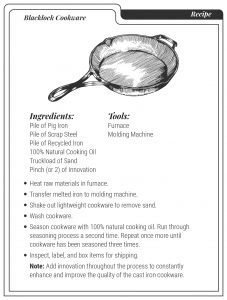
THE BLACKLOCK HISTORY

Each piece of Blacklock has been linked to a date in Lodge history. Cast into the iron, these dates serve as reminders of their roots. As Lodge introduces the revolutionary new Blacklock line, they hold their past close to their hearts and look ahead toward the future. Each piece of Blacklock comes with a history booklet.
1863 | 18cm Skillet | Joseph Lodge Leaves Home
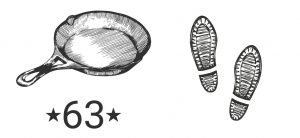
In 1863, the country was divided by war. Many families and communities fell on tough times. Two years into the Civil War, the end of the conflict seemed far out of reach. Meanwhile, in Pennsylvania, a young man named Joseph Lodge was coping with his own worries closer to home. The death of his father meant his family was left without income. As the oldest son of five siblings, it was his responsibility to make a living. But how? He was only 15 and had not yet developed marketable skills. All the same, duty called. He packed his things, left home, and headed for Wilmington, Delaware. His trek took him to his first stop: Poole’s Machine Shop, where he trained as a machinist. This is where our story of an American company and an American family begins.
1896 | 26cm Skillet | Blacklock is Founded
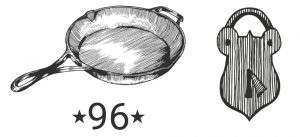
In 1896, at the corner of Cedar Avenue and First Street in South Pittsburg, Tennessee, a former railroad foundry was given a new start. Fire was fed into the furnace and the once-dormant foundry began to whir into motion. The facility transformed from a silent and vacant state to a thriving scene of production. Named the Blacklock Foundry for Joseph Lodge’s dear friend and minister, Joseph Hayton Blacklock, the business focused on cast iron manufacturing. Original products varied from stoves and sad irons to tea kettles and kitchen sinks. The bread and butter of production? Cast iron cookware.
1910 | 37cm Skillet | Blacklock Burns, Reborn as Lodge

By 1910, Blacklock employed 100 men. The local newspaper called it “the largest independent sad iron and hollowware manufacturer in the South.” At 4 am, production began. Workers would melt the
iron in the cupola, then pour it into the moulds around 9 am. From there, the cooled iron would go through a shakeout, to remove the cast iron from the mould. Each person managed a floor and was paid by the number of pieces completed in a day. After 14 years of successful production, however, Blacklock’s fate hung in the balance. Late one night in May, a fire sparked and roared through the building, burning the robust foundry to the ground. But Joseph Lodge and his family were resourceful. From the ashes, Blacklock rose again to become the company we recognize today: Lodge Cast Iron.
1939 | 30cm Skillet | Lodge Survives Great Depression

Following a strong period of growth in America, the stock market crashed and devastation rocked the nation. Consumer purchase of cast iron cookware declined. Lodge needed to find a way to keep their doors open. Richard Leslie Lodge, Joseph’s son, noticed skillets weren’t selling, but people would still buy doorstops. In response, Lodge increased production of doorstops and fireplace irons in the likeness of animals. These items experienced far more successful sales during this period of time. This ingenuity and resourcefulness not only kept the family-owned business afloat but kept local workers steadily employed through the end of the Great Depression in 1939, and beyond.
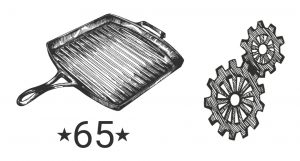
In the 1950s, Lodge made changes toward automation in the casting process by updating machinery. In 1963, they began discussing the purchase of a Danish moulding machine called a Disamatic. Once used to mould and manufacture weapons during World War II, Disa switched its focus to develop sand-moulding machines for metal casting production. Lodge purchased the second U.S. Disamatic in 1964 and in 1965, became the first American company to use the Disamatic on U.S. soil. The addition of this machine greatly improved production capabilities, as the machine could do the work of five-to-eight men.
1877 & 1977 | Double Burner Griddle | Joseph Gets Married & Foundry Rebuilt, Boosts Labour
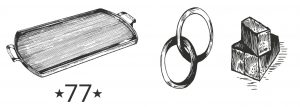
1877—Joseph & Anna Elizabeth marry
As Joseph travelled the world, he kept in constant correspondence with his friend Anna Elizabeth Harvey. When his return to the U.S. brought him to New York City, he travelled on to Philadelphia to call on Anna Elizabeth in person. In 1877, Joseph bought land in South Pittsburg, married Anna Elizabeth, and brought her home to Tennessee as his bride.
1977—Foundry rebuilt, boosts labour
During tough economic times of 1977, William Leslie Kellermann, Joseph’s grandson, drafted a plan to reconstruct the foundry. His plans used steel columns to support a new roof and the eventual building of a new exterior. This multi-year project enabled Lodge to bring employees back to full, 5-day workweeks.
2002 | 5.2L Dutch Oven | Lodge Introduces Pre-Seasoning
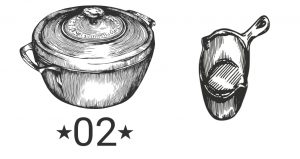
For quite some time, the final stage of Lodge’s cast iron production involved a wax coating that consumers would wash off before seasoning the pans themselves at home. Experienced users understood the process, while prospective cast iron users often viewed it as an obstacle. In an effort to fix this perception, Lodge’s President and CEO, Bob Kellermann, led the initiative to pre-season each piece of cast iron cookware before it made its way to stores. In 2002, the process was finalized and Lodge debuted seasoned cast iron. As the first manufacturer to introduce this concept into the market, Lodge experienced great success. Seasoned sales quickly outperformed unseasoned iron. In five short years, the seasoned iron was so popular, Lodge decided to discontinue the production of any unseasoned iron.

“We gave you a head start. With extra love and care poured into each piece of Blacklock, your cookware arrives ready to use as if it’s a beloved heirloom. Here’s how to get the best
out of your cookware for years to come.”
Triple Seasoned™ for a natural nonstick finish Blacklock, like all Lodge cast iron, has natural cooking oil baked onto the surface. This forms a protective layer that provides an easy-release finish. The difference? Blacklock is triple seasoned, making the surface naturally nonstick. The more you cook with your cast iron, the thicker the seasoning becomes.
Note: We know highly acidic and alkaline foods can feel daunting when using cast iron cookware but after only a few uses with the triple seasoned finish, we encourage you to feel free to introduce these foods to your pan.
Better With Age
Lightweight design for easy lift
Due to Blacklock’s thin-wall design, you can experience quick and efficient heating on a lower heat setting for the same results in a similar amount of time. This cookware performs best when gradually heated and cooled.
Durable versatility so you can cook anything, anywhere
- Safe to use on any heat source or cooking surface, indoors and out.
Note: Always lift cookware on smooth-top stoves.
- Handles are elongated and lifted for ease of use—they’re also slow to get hot and quick to cool down.
Note: Still always take precaution to protect your hands when dealing with a heated pot.
Take care of your cast iron and it’ll last for generations.
Simply wash, dry, and rub with oil. That’s it!
Did you know you can use soap?
While you usually don’t need it, there may be times where you have some tough baked-on food—or a lingering odour or taste (think: fish). A little soap will refresh your pan and keep your seasoning intact.
The 3 Steps to a Brand New Pan

- Wash by hand. Use a small amount of soap, as needed.
- Dry thoroughly with a lint-free cloth or a paper towel.
- Oil the surface of the pan with a very light layer of cooking oil while warm.